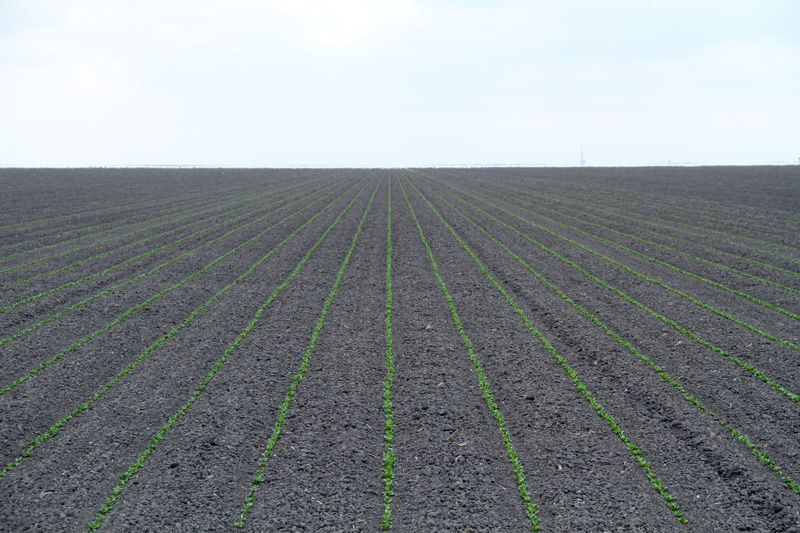|
ACHIEVING SALT BALANCE IN TULARE LAKE BASIN, CALIFORNIA [130409 12:15]
ACT I: TULARE LAKE AT PRESENT Introducing the main character and the main tension: All salt is being stored in the basin. Tulare Lake Basin is located in the Southern San Joaquin valley, in California. It is home to some of the most productive irrigated agriculture in the world (5). The fields are maintained in top condition by drainage, which removes excess salts from the root zone (2, 7). The drainage waters, which contain a high concentration of salts, are being stored in evaporation ponds (1). Since there is no salt export, the salts continue to accumulate, with no apparent end in sight (8). To this date, about 3% of the land has been compromised by the evaporation ponds (9). There is a risk that the salt stored in the evaporation ponds may eventually percolate down into the underlying aquifers.
ACT II: TULARE LAKE IN THE PAST The obstacles that prevent the basin from achieving salt balance are presented. Tulare Lake basin is a semi-endorheic basin located near the southern extremity of the San Joaquin valley (***). Until the late 19th century, Tulare Lake was the largest freshwater lake west of the Mississippi river. The lake was maintained by tributary inflow from the Kern, Tule, Kaweah, and Kings rivers (***). About every two years, the lake would fill up, causing the Kings river to reverse its direction and to flow north into the San Joaquin river. From 1850 to 1878, the overflow occurred in 19 out of 29 years. Therefore, under pristine conditions, Tulare Lake functioned as a semi-endorheric basin, occasionally flushing its salts into the San Joaquin river and to the Pacific Ocean. By 1899, following intensive development, water diversions caused the lake to dry up, except for residual wetlands and infrequent floods. The development of agriculture prevented the natural overflow and washing of the salts from the basin (***). In the 20th century, with the lake dry, agriculture moved in, eventually to develop one of the most productive irrigation enterprises in the world. The disappearance of the lake meant the elimination of the overflow and the storage of all salts within the closed basin.
ACT III: FUTURE OF TULARE LAKE Climax - Presents current solutions and future strategies to achieve salt balance. Salinity management at Tulare Lake is currently considering several options. The prevailing strategy continues to be salt storage in evaporation ponds (4).
Since salts are not being exported, they continue to accumulate and will continue to compromise increasing portions of the basin. Other strategies include the reuse of drainage waters by growing salt-tolerant species such as Jose Tall wheatgrass and pistachios (3, 6, 10). Technological advances are currently being explored to determine whether the salts can be separated by chemical processes and their components sold for commercial uses. The salts consist primarily of sodium sulfate and sodium chloride, with small amounts of selenium, the latter of geologic origin. The commercial solution hinges on the development of appropriate markets for the salt products.
Export of salts through a brine line to the Pacific Ocean is a costly but effective means of assuring the sustainability of Tulare Lake basin. Achieving salt balance in Tulare Lake basin remains a challenge to this date.
1. Evaporation pond, Tulare Lake Drainage District
2. Cotton field at the bottom of Tulare Lake
3. Jose Tall wheatgrass
4. Evaporation pond, Tulare Lake Drainage District
5. Irrigated field, Tulare Lake basin
6. Jose Tall wheatgrass
7. Drainage channel, San Joaquin Valley
8. Evaporation pond turned into wildlife habitat, Tulare Lake basin
9. Evaporation pond, Tulare Lake basin
10. Salt-tolerant pistachio trees, irrigated with drainage water, San Joaquin Valley
Music: Fernando Oñate Editor: Rosa D. Aguilar
Credits: Wikipedia, Google
Copyright © 2013 Visualab Productions All rights reserved
|










